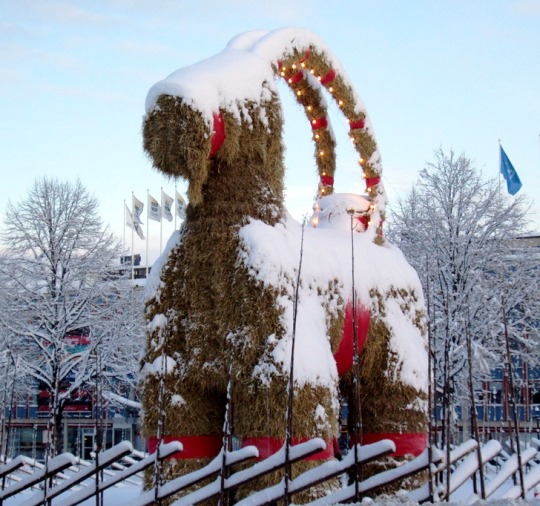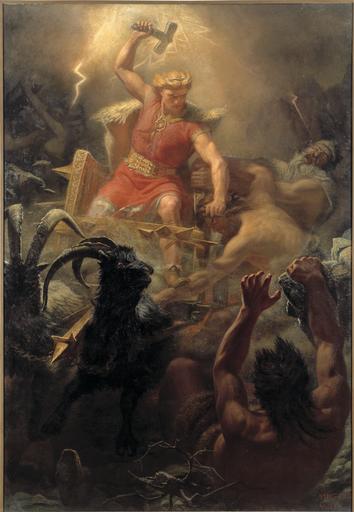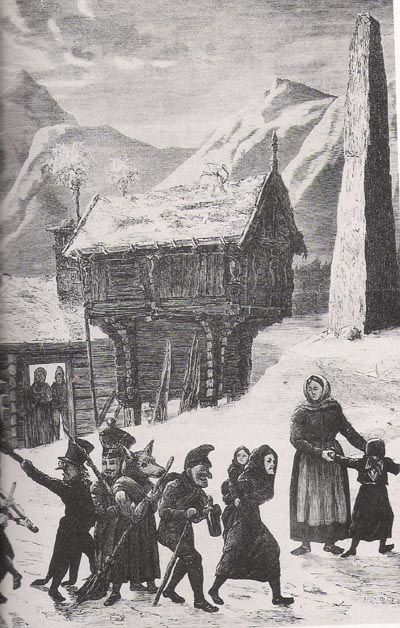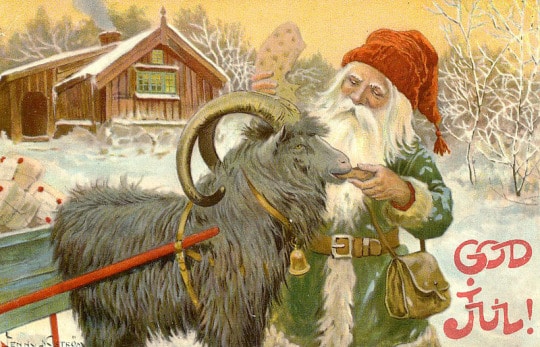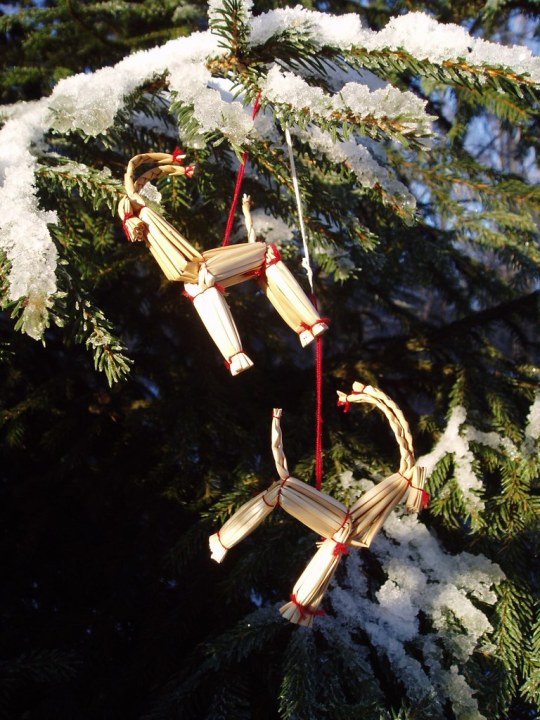The Peppermint Pig
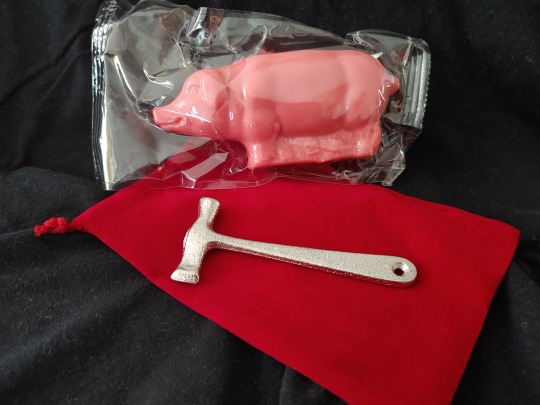
On Christmas Day, after we’ve had dinner and dessert and all sit around the table chatting, my family observes one of my favorite holiday traditions. This tradition involves a red velvet pouch, a tiny metal hammer, and a piece of bright pink, peppermint-flavored hard candy in the shape of… a pig!
The peppermint candy pig is placed in the velvet pouch and we pass it around the table, every person giving it a solid whack with the little hammer and sharing a fond story or memory from the past year. After the pig is broken into small enough pieces, we each eat a piece of the candy, and continue enjoying each other’s company. Some years, the whole family is together—gathered from far away—and the pig is broken quite quickly. Other years, when we can’t all be together, it may take the smaller group longer to break the pig; but that just gives each of us the chance to share more memories.
This tradition is not unique to my family, but I haven’t met anyone outside my family that also observes this custom! It originated during the Victorian Era (1837-1901) in Saratoga Springs, New York. Pigs were honored in Victorian holiday celebrations as symbols of health, prosperity, and happiness. Peppermint oil has a long history of use in medicine, as it helps calm an upset stomach, and has been a popular candy flavoring for a very long time – in fact, no one is entirely sure when peppermint candy was first developed!
Believe it or not, breaking the peppermint pig is not the only pig-themed custom my family observes!
Pork and Sauerkraut
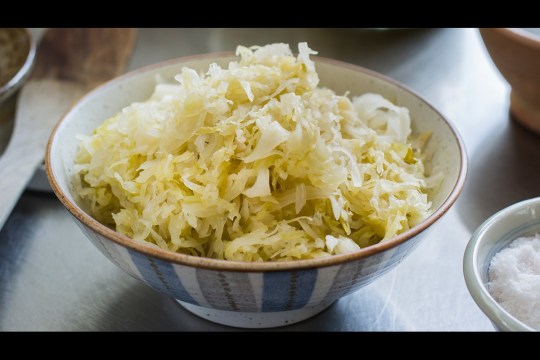
My family is mostly German, though we are also Austrian and Slovakian. One German custom we observe during the holiday season is eating pork and sauerkraut, a dish made from fermented cabbage, for our New Year’s Day dinner. This is another favorite tradition of mine, and one of my favorite meals, though I didn’t like sauerkraut when I was a kid! Now I love pork and sauerkraut and look forward to the smell of it filling my house on New Year’s Day as it slowly cooks all day long.
Germans eat pork and sauerkraut for New Year’s because it’s meant to be lucky, and we want to start a new year off with some luck. This tradition came to the United States with German immigrants in the 17th and 18th centuries. Many of these immigrants settled in Pennsylvania and their descendants are now known as Pennsylvania Dutch (Dutch is derived from Deutsch which means German in the German language). My family is not Pennsylvania Dutch, though we do originate from the same part of the state.
Pigs are lucky animals because they root forward when looking for food, much like we want to look forward as the year begins. For this reason, we don’t eat any chicken or turkey on New Year’s Day; these birds scratch their feet behind them, and we don’t want to move backward, we want to move forward!
Sauerkraut is a lucky food for a few reasons. The long strands of cabbage can represent a long life and the green color of the cabbage (before it’s been fermented) represents money. Sauerkraut is also a great health food: it is a source of vitamins C and K, calcium, and magnesium, it’s low in calories, and it promotes good gut health! This might be another reason it’s considered lucky–people probably felt pretty good after eating it!
Guess what! There’s still one more pig-themed tradition I’d like to share!
Glücksschwein (the Good Luck Pig)
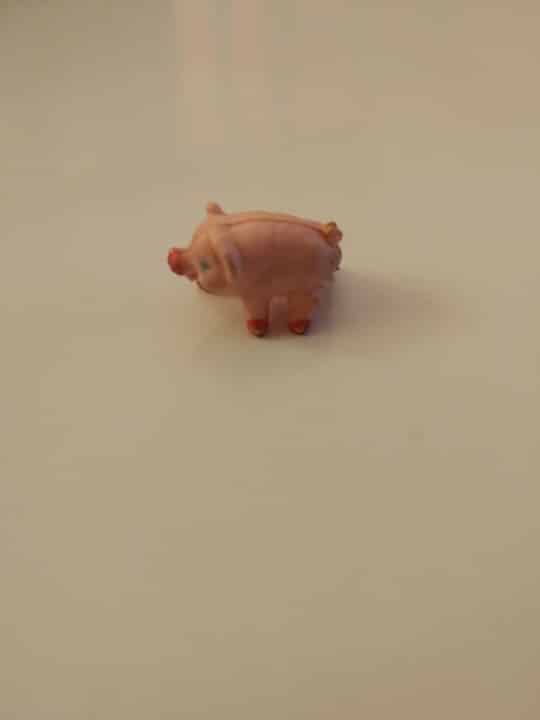
I have a small rubber pig that I have had since I was very young. For a very long time, I stuck it to the wall by my bedroom door, but now I have it sitting safely in a box of memories. This pig is my good luck pig, or Glücksschwein in German. Pigs are kind of similar to a four-leaf clover in representing good luck!
I’ve mentioned a few ways that pigs are related to luck, but I haven’t shared one major reason why pigs are considered lucky. Pigs are related to farming and livestock, and therefore wealth and prosperity! In Germany, pigs made from marzipan, a sweet made of sugar or honey and almond meal, might be given out to eat for New Years.
We don’t eat marzipan pigs for New Years, but instead I have my little glücksbringer—good-luck bringer, or lucky charm—to bring me luck and prosperity!
Jo Tauber is the Gallery Experience Coordinator in CMNH’s Life Long Learning Department. Museum staff, volunteers, and interns are encouraged to blog about their unique experiences and knowledge gained from working at the museum.
